Terramaster T9-500 Pro NAS Review
The Terramaster T9-500 Pro is the latest NAS solution from Terramaster, aimed at small to medium-sized businesses and content creators who need robust storage solutions. This 9-bay desktop NAS offers a variety of features including dual 10GbE ports, support for high-capacity SATA drives, and powerful performance through its Intel Core i7 processor. But with a price tag ranging from $1,400 to $1,500, it targets users who need significant storage, high-speed connectivity, and the ability to scale their storage needs over time.
As the NAS market becomes increasingly competitive, the T9-500 Pro stands out due to its balance of price, performance, and scalability. With its advanced hardware and software capabilities, it offers strong competition to other NAS devices in the same price range. It’s designed to handle demanding tasks, including virtualization, video production, and large-scale file management. But like any product, it comes with its own set of strengths and weaknesses. In this article, we’ll take a closer look at the hardware specifications, pros, and cons of the Terramaster T9-500 Pro to help you decide whether this NAS is worth your investment.
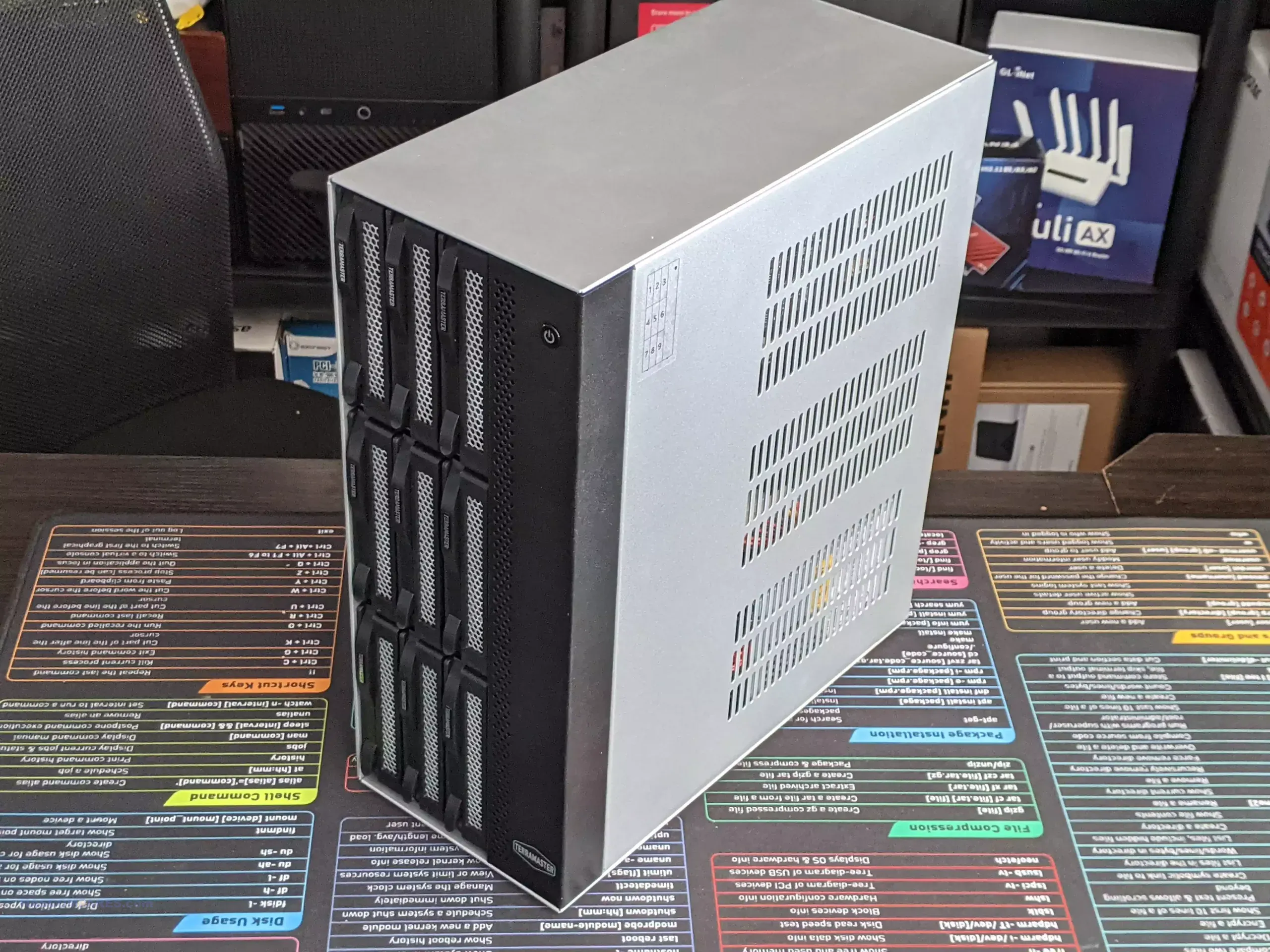
| Specification | Details |
|---|---|
| Processor | Intel Core i7-1255U, 10-Core (Max burst up to 4.7 GHz) |
| Memory | 16GB DDR5 (Upgradeable to 64GB DDR5) |
| Storage Bays | 9 x 3.5″ SATA HDD (Supports 2.5″ SATA HDD and SSD) |
| Maximum Storage | Up to 198TB (22TB x 9) |
| Network Ports | 2 x 10GbE RJ-45 (Copper) |
| USB Ports | 3 x USB 3.2 (Type A) and 1 x USB 3.2 (Type C), all 10Gbps |
| M.2 NVMe Slots | 2 x PCIe 4.0 x4 (For SSD caching) |
| RAID Support | TRAID, RAID 0, 1, 5, 6, 10, JBOD |
| Operating System | TOS 6 (Terramaster’s NAS OS) |
| Cooling | 3 x 92mm Smart Fans |
| Power Consumption | 100W (Fully loaded), 31W (Hibernation) |
| Noise Level | 22.5 dB(A) (In standby with SSDs) |
| Dimensions | 334 x 135 x 295 mm |
| Weight | 6.5 kg |
| Warranty | 2 Years |
Terramaster T9-500 Pro NAS Review – Quick Conclusion
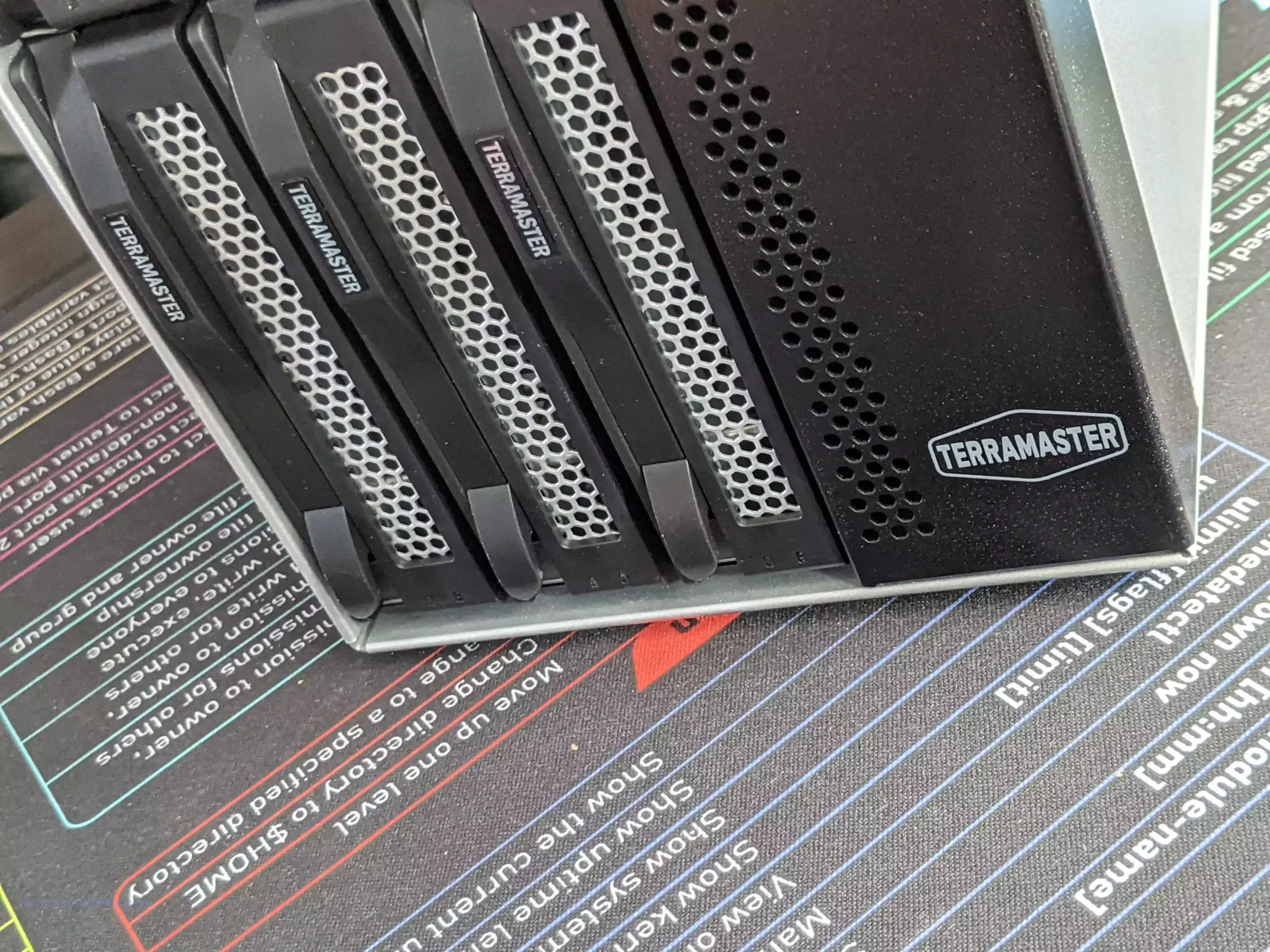
The Terramaster T9-500 Pro is a highly capable NAS that offers a lot of value for its price, especially when compared to more expensive alternatives on the market. Its combination of dual 10GbE ports, support for high-capacity storage, and a powerful Intel Core i7 processor makes it well-suited for demanding applications like virtualization, video production, and large-scale file management. Additionally, the flexible RAID configurations and expandable memory ensure that this NAS can scale with your business or creative needs. However, the system does have some limitations. The absence of USB4, high power consumption, and reliance on an older generation CPU may deter users looking for cutting-edge technology or more energy-efficient solutions. Furthermore, the maturity of Terramaster’s TOS 6 software, while improving, still falls short of the seamless experience offered by competitors like Synology and QNAP.
In terms of pricing, the T9-500 Pro offers a good balance between performance and cost, especially for users who need a 9-bay system with high-speed connectivity. But for those with more modest storage needs, the cheaper F4-424 Max might be a better fit. Ultimately, the T9-500 Pro is a strong choice for businesses or power users who need robust storage, but its value will depend on your specific performance and storage requirements. If your use case aligns with what this NAS has to offer, it can be an excellent investment. But if you’re looking for the latest technology or a lower power consumption system, you might want to explore other options.
Where to Buy a Product





![]()
![]()

VISIT RETAILER ➤






![]()
![]()

VISIT RETAILER ➤






![]()
![]()

VISIT RETAILER ➤






![]()
![]()

VISIT RETAILER ➤
 DEAL WATCH – Is It On Offer Right Now? DEAL WATCH – Is It On Offer Right Now?Terramaster F8 SSD PLUS Flash NAS Amazon  USA 20% OFF, NOW $639.99 BF2025 [LINK] USA 20% OFF, NOW $639.99 BF2025 [LINK] These Offers are Checked Daily
|
PROs of the Terramaster T9-500 Pro
The Terramaster T9-500 Pro comes packed with a variety of features that make it a versatile and high-performance NAS solution. For businesses and power users who need scalability and speed, this device offers a compelling set of advantages. Let’s dive into the major strengths of the T9-500 Pro.
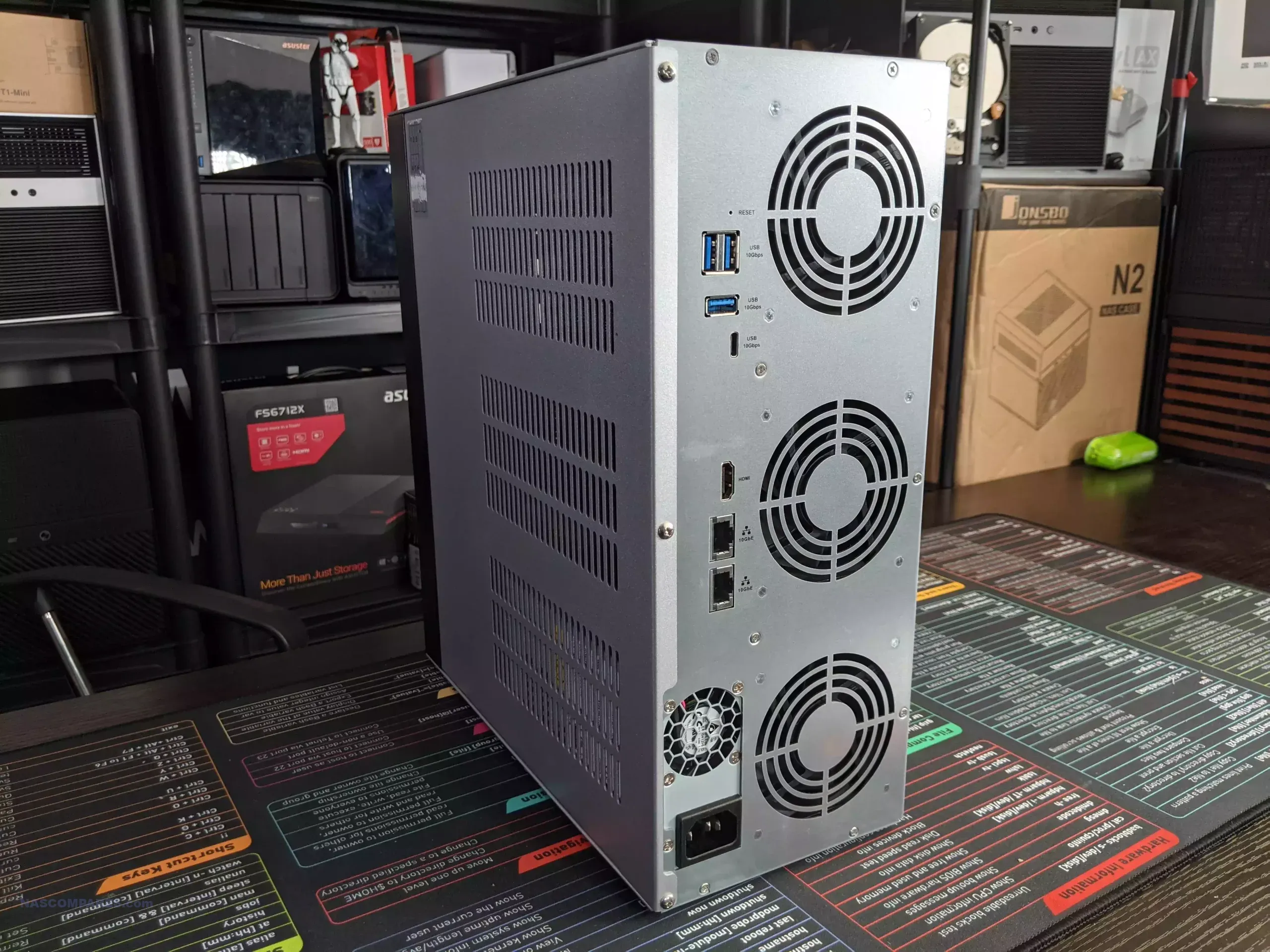
1. High-Speed Connectivity and Ports
The Terramaster T9-500 Pro shines when it comes to connectivity. Equipped with dual 10GbE RJ-45 copper ports, it delivers up to 20Gbps of bandwidth, which is ideal for high-speed data transfers. Whether you’re a video editor or running a data-heavy enterprise, these ports provide incredible flexibility for handling large files and multimedia content. Additionally, the NAS is fitted with multiple USB 3.2 ports, both Type A and Type C, all offering 10Gbps speeds. This makes it easier to connect external storage devices or expansion chassis, giving users even more options for expanding their network.
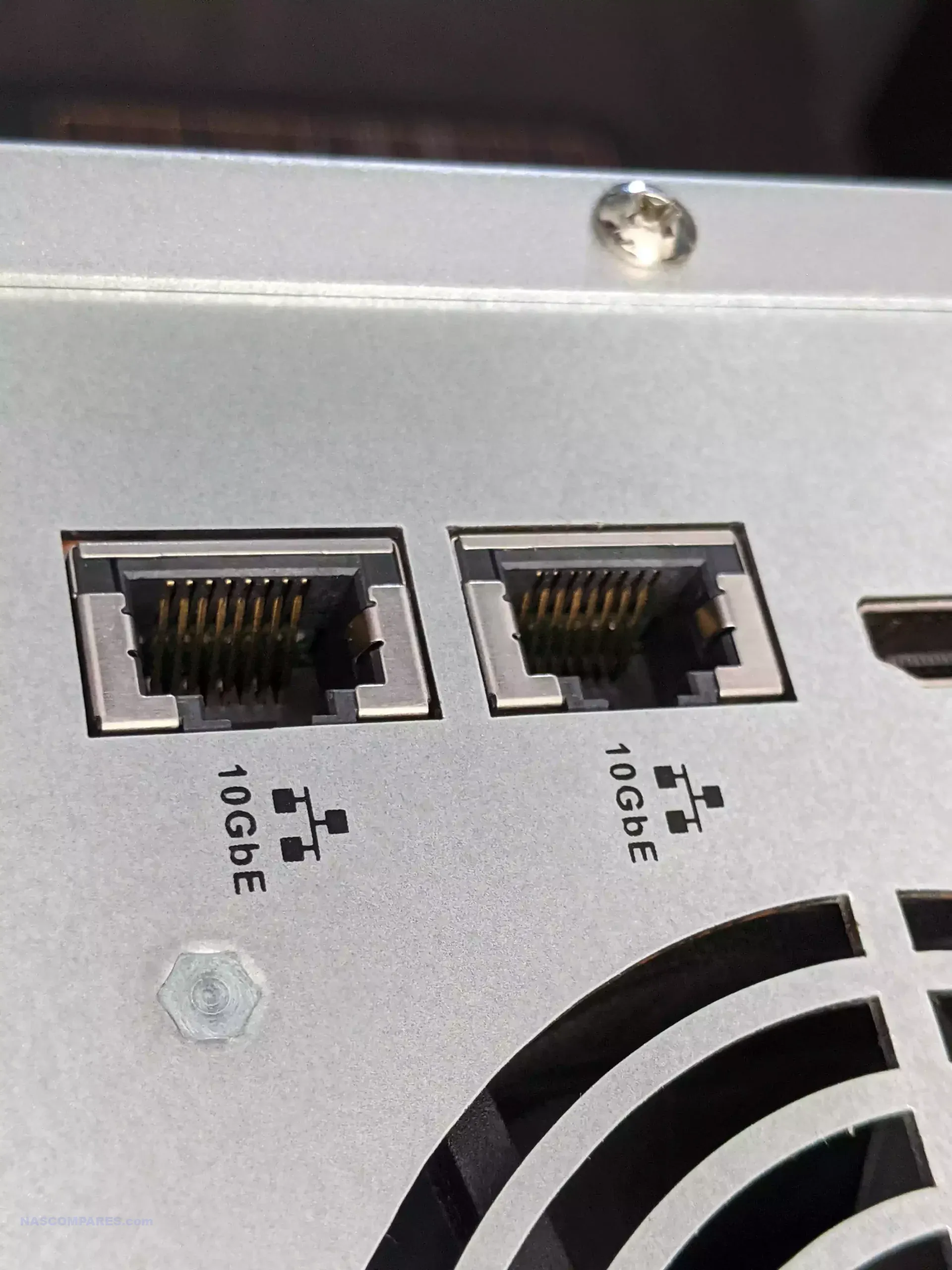
In terms of expandability, the inclusion of two PCIe 4.0 x4 M.2 NVMe slots is a fantastic feature. These slots can be used for SSD caching, significantly improving the read/write performance of the entire storage system. For those working with large media files or running demanding virtualized environments, this adds a layer of performance that puts the T9-500 Pro in a league of its own.
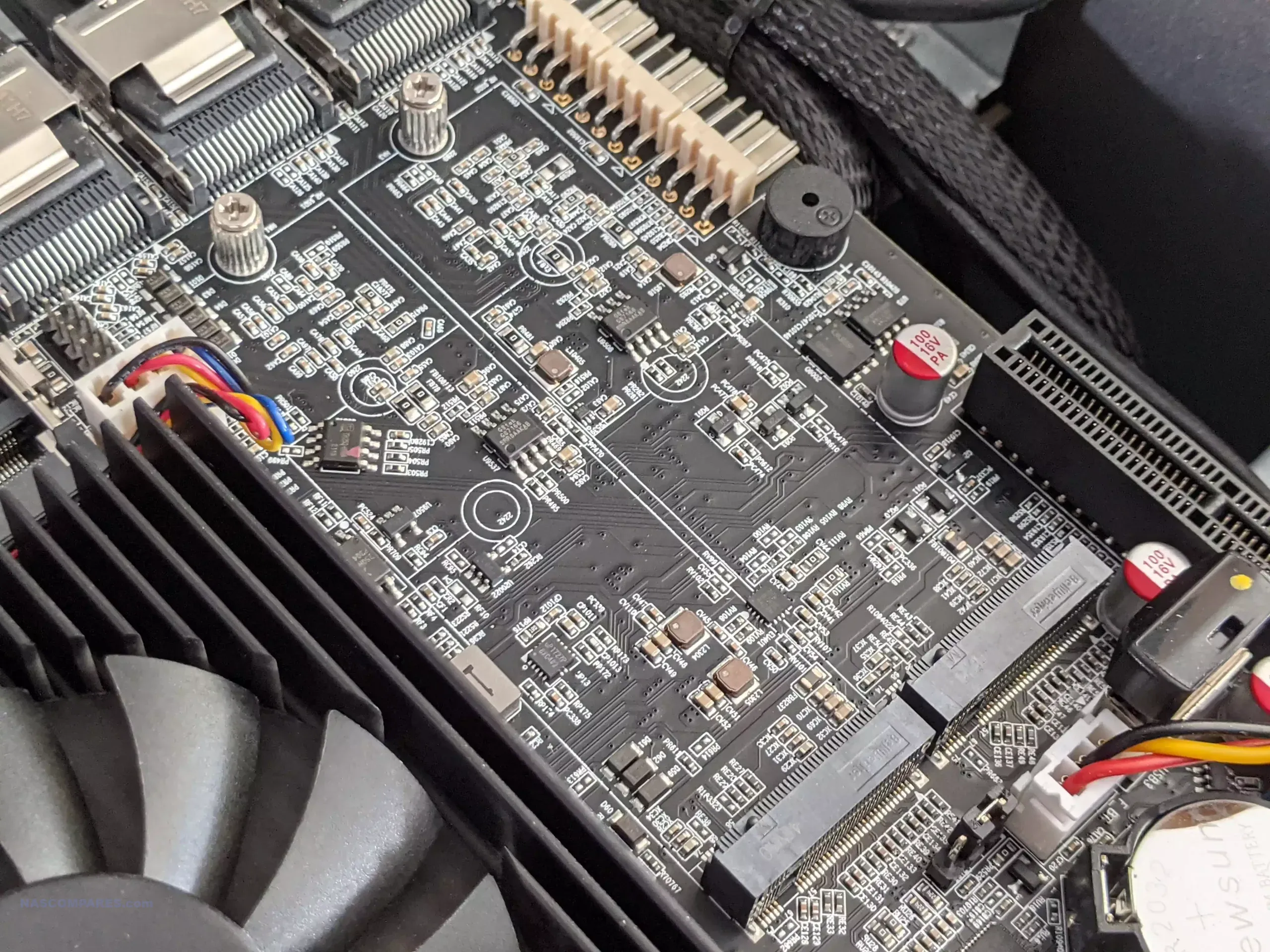
2. Solid Build and Design
The T9-500 Pro’s design strikes a balance between functionality and aesthetics. The compact form factor, along with the 9-bay configuration, gives it the versatility of a desktop unit, while maintaining the high capacity typically seen in rack-mounted systems. The chassis is well-built and feels durable, making it ideal for enterprise environments where ruggedness is a necessity. The hot-swappable drive bays make accessing and maintaining your storage drives effortless.
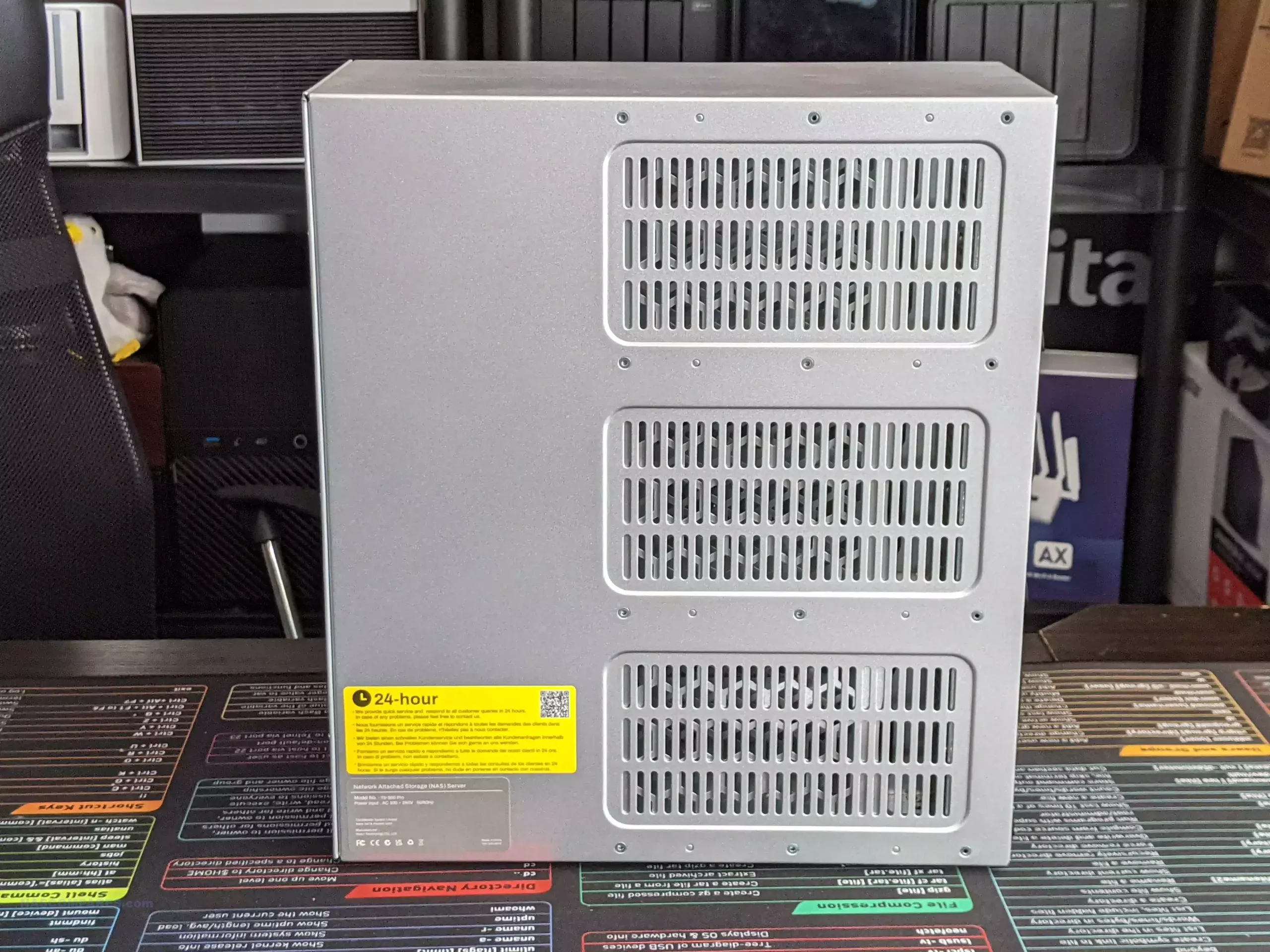
Another impressive design feature is the smart cooling system. With three 92mm fans mounted on the rear, the NAS keeps noise levels low, even when fully loaded with drives. This makes it a practical choice for both office and home setups, as it won’t contribute to unwanted background noise. In fact, its noise level, which hovers around 22.5 dB(A) in standby mode, is quite impressive for a device of this caliber.
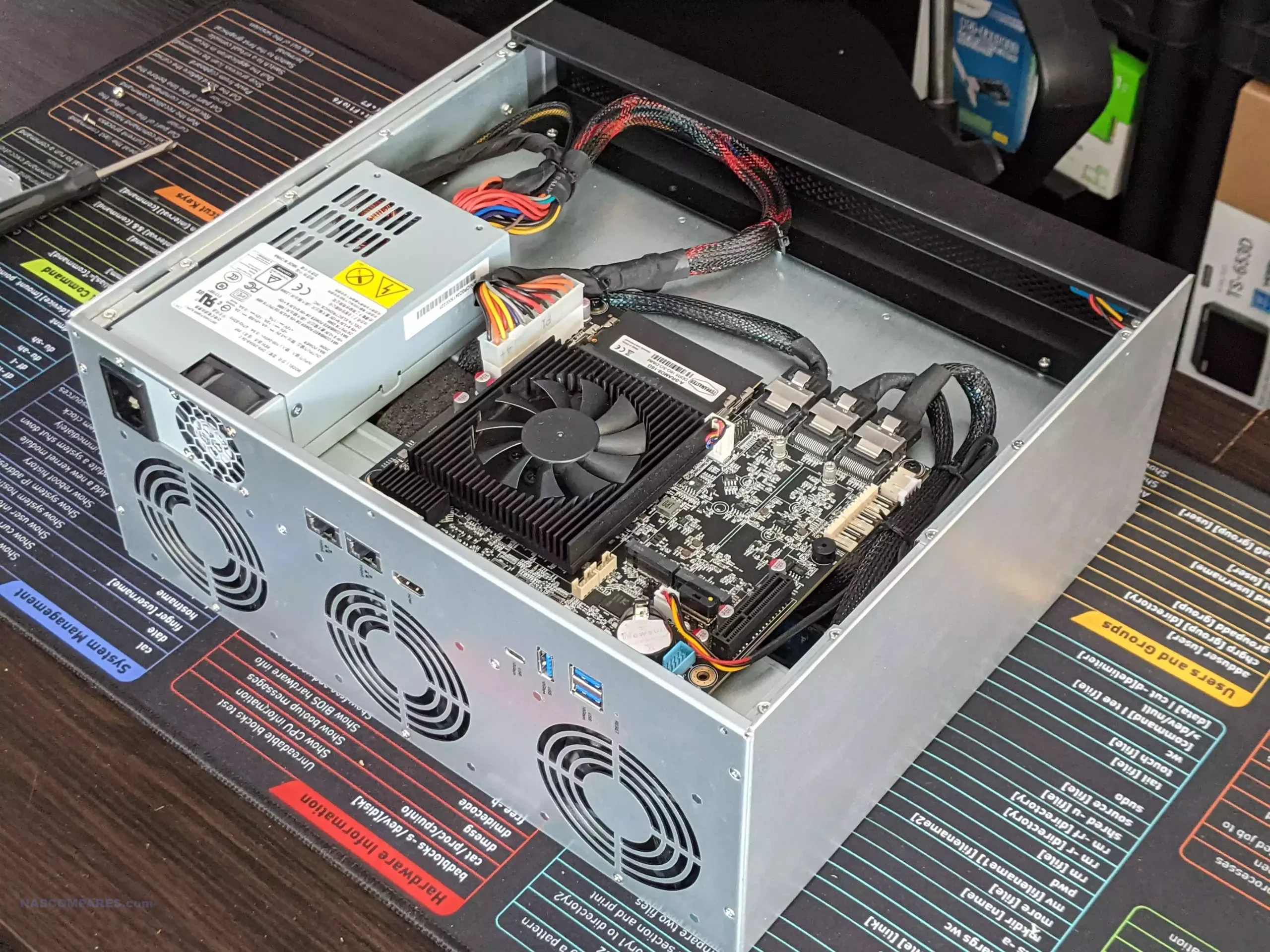
3. Strong Processing Power
At the heart of the T9-500 Pro is the Intel Core i7-1255U processor. With 10 cores (2 performance and 8 efficiency cores), this 12th generation processor can handle multiple tasks simultaneously, making it suitable for everything from file storage to video editing and even virtualization. The CPU’s ability to deliver strong performance without bottlenecking makes it ideal for those who need to get the most out of their hardware.

The processor also includes Intel Iris Xe Graphics, enabling hardware-accelerated transcoding for H.264, H.265, and other video formats. This means users can stream and convert video content at 4K resolution without experiencing significant performance drops, which is particularly useful for multimedia production and live streaming environments.
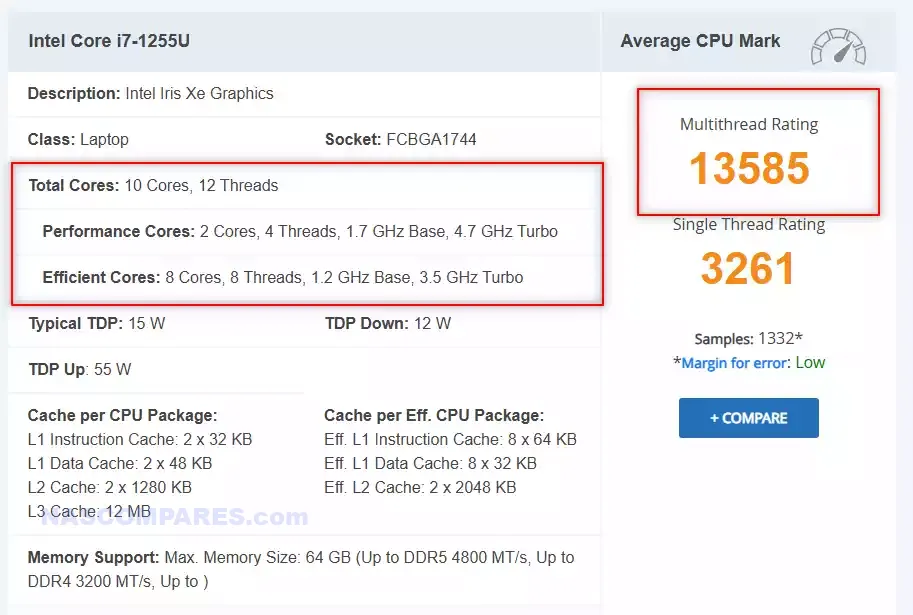
4. Flexible Storage and RAID Options
The T9-500 Pro offers an impressive array of storage options. With support for up to 198TB of raw storage, the NAS can handle large-scale data needs, making it suitable for enterprises, creative professionals, or those dealing with massive data sets. The inclusion of multiple RAID levels, including TerraMaster’s own TRAID system, allows for flexibility in how users configure their storage. Whether you’re looking for maximum redundancy, speed, or a balance of both, the T9-500 Pro has you covered.

Additionally, the flexible storage configuration extends to the ability to create multiple volumes, which is perfect for businesses needing to separate workspaces or departments. This versatility ensures that the NAS can grow alongside your storage needs, whether you’re working with media, databases, or virtual machines.
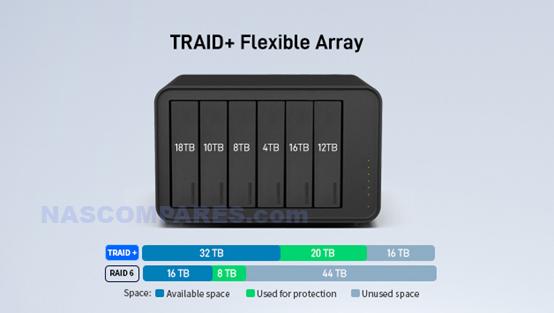
5. Cost-Effective for Its Class
At around $1,400 to $1,500 ($1599 on amazon, but $1499 on the official Terramaster site), the Terramaster T9-500 Pro might seem expensive at first glance, but when you compare it to similar offerings in the market, it provides excellent value for money. Comparable NAS systems with 10GbE connectivity, advanced processors, and 9-bay configurations can cost significantly more, often reaching over $2,000. The T9-500 Pro delivers a solid balance of high-end performance, expandability, and ease of use without the premium price tag associated with other brands like Synology or QNAP.
The cost is further justified by the fact that this NAS is future-proof, with the ability to upgrade memory, add more storage, and connect external devices. For SMBs or content creators who need reliable, high-performance storage without breaking the bank, this is an excellent option.

CONs of the Terramaster T9-500 Pro
Terramaster T9-500 Pro NAS Review – Verdict
The Terramaster T9-500 Pro is a highly capable NAS that offers a lot of value for its price, especially when compared to more expensive alternatives on the market. Its combination of dual 10GbE ports, support for high-capacity storage, and a powerful Intel Core i7 processor makes it well-suited for demanding applications like virtualization, video production, and large-scale file management. Additionally, the flexible RAID configurations and expandable memory ensure that this NAS can scale with your business or creative needs.
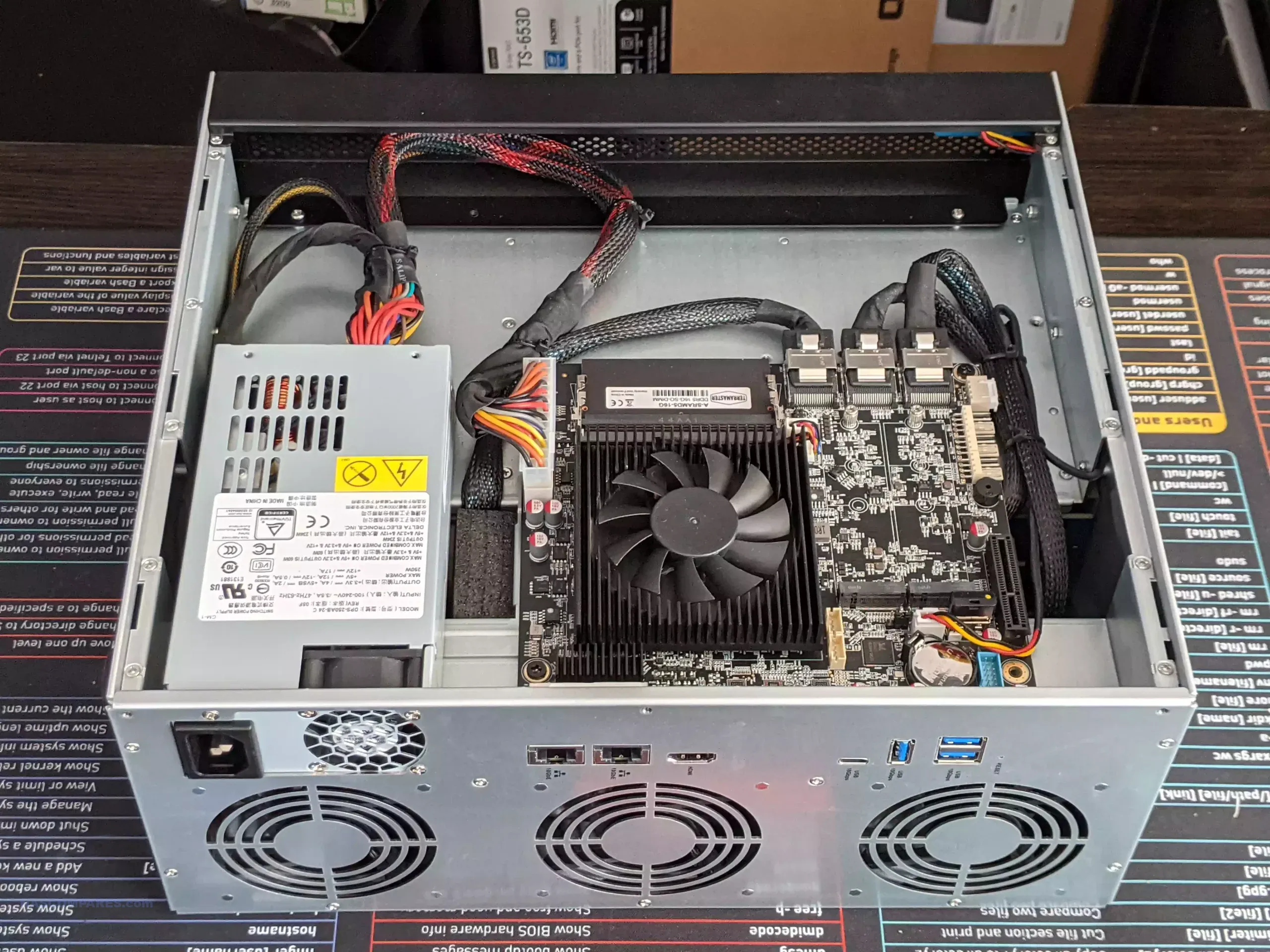
However, the system does have some limitations. The absence of USB4, high power consumption, and reliance on an older generation CPU may deter users looking for cutting-edge technology or more energy-efficient solutions. Furthermore, the maturity of Terramaster’s TOS 6 software, while improving, still falls short of the seamless experience offered by competitors like Synology and QNAP.

In terms of pricing, the T9-500 Pro offers a good balance between performance and cost, especially for users who need a 9-bay system with high-speed connectivity. But for those with more modest storage needs, the cheaper F4-424 Max might be a better fit. Ultimately, the T9-500 Pro is a strong choice for businesses or power users who need robust storage, but its value will depend on your specific performance and storage requirements.
If your use case aligns with what this NAS has to offer, it can be an excellent investment. But if you’re looking for the latest technology or a lower power consumption system, you might want to explore other options.
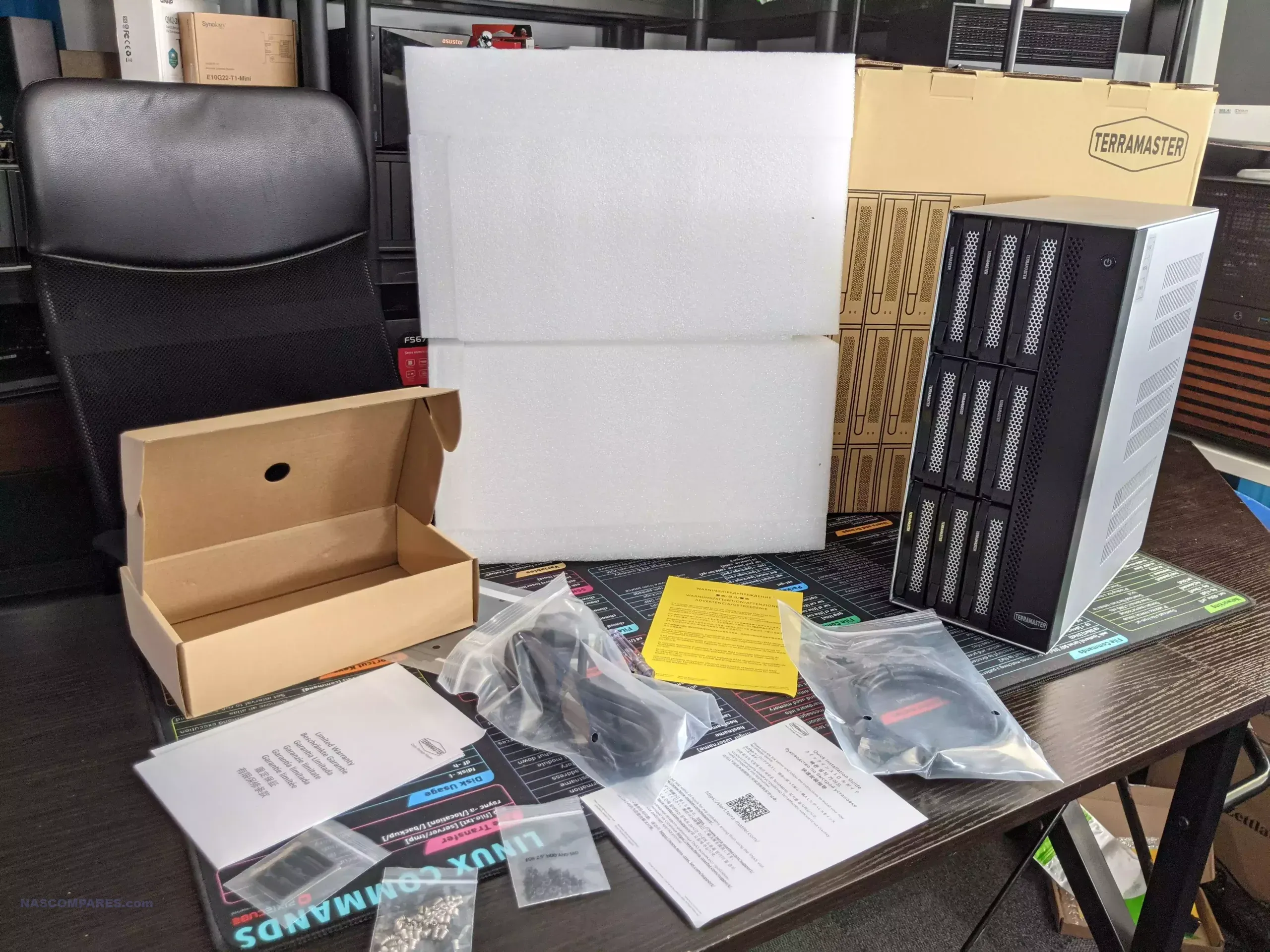
🔒 Join Inner Circle
Get an alert every time something gets added to this specific article!
This description contains links to Amazon. These links will take you to some of the products mentioned in today's content. As an Amazon Associate, I earn from qualifying purchases. Visit the NASCompares Deal Finder to find the best place to buy this device in your region, based on Service, Support and Reputation - Just Search for your NAS Drive in the Box Below
Need Advice on Data Storage from an Expert?
Finally, for free advice about your setup, just leave a message in the comments below here at NASCompares.com and we will get back to you. Need Help?
Where possible (and where appropriate) please provide as much information about your requirements, as then I can arrange the best answer and solution to your needs. Do not worry about your e-mail address being required, it will NOT be used in a mailing list and will NOT be used in any way other than to respond to your enquiry.
Need Help?
Where possible (and where appropriate) please provide as much information about your requirements, as then I can arrange the best answer and solution to your needs. Do not worry about your e-mail address being required, it will NOT be used in a mailing list and will NOT be used in any way other than to respond to your enquiry.

|
 |
Beelink ME Pro NAS Revealed
Best SOLID STORAGE NAS of 2025
Should You Worry About the NanoKVM Hidden Microphone?
Best Cheap NAS of 2025
Minisforum MS-02 Ultra - WHO IS THIS FOR??? (The First 48HRs)
Why People Use TrueNAS, UnRAID and Proxmox to Turnkey NAS (Synology, QNAP, etc)
Access content via Patreon or KO-FI
Discover more from NAS Compares
Subscribe to get the latest posts sent to your email.


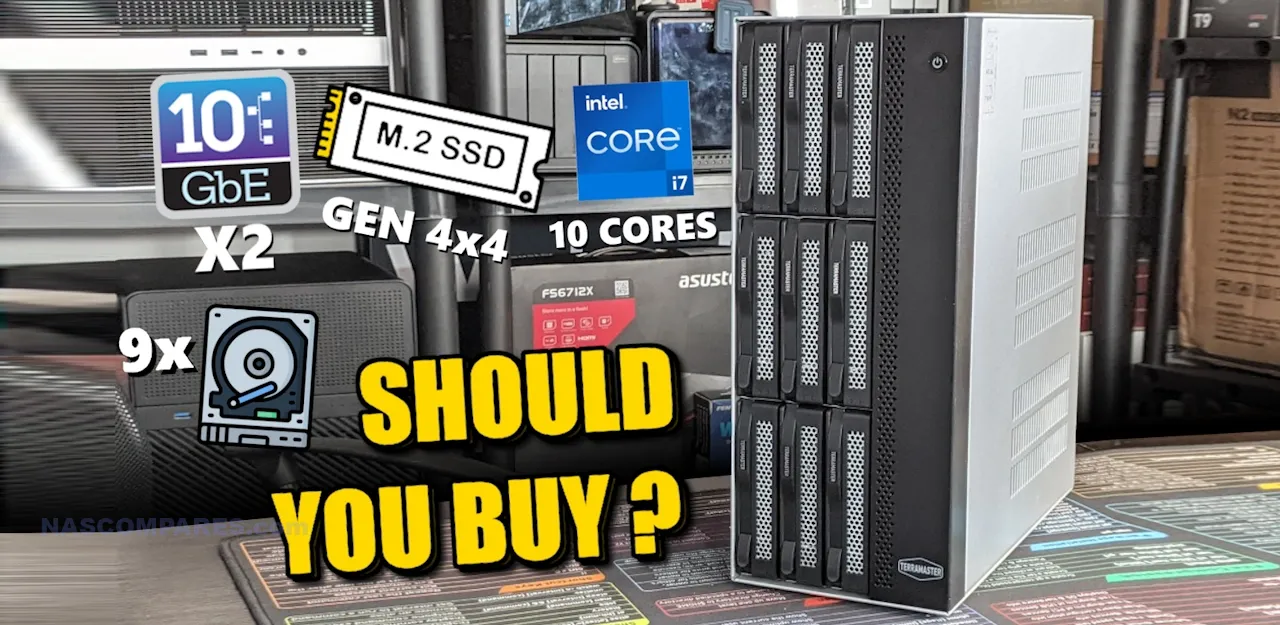

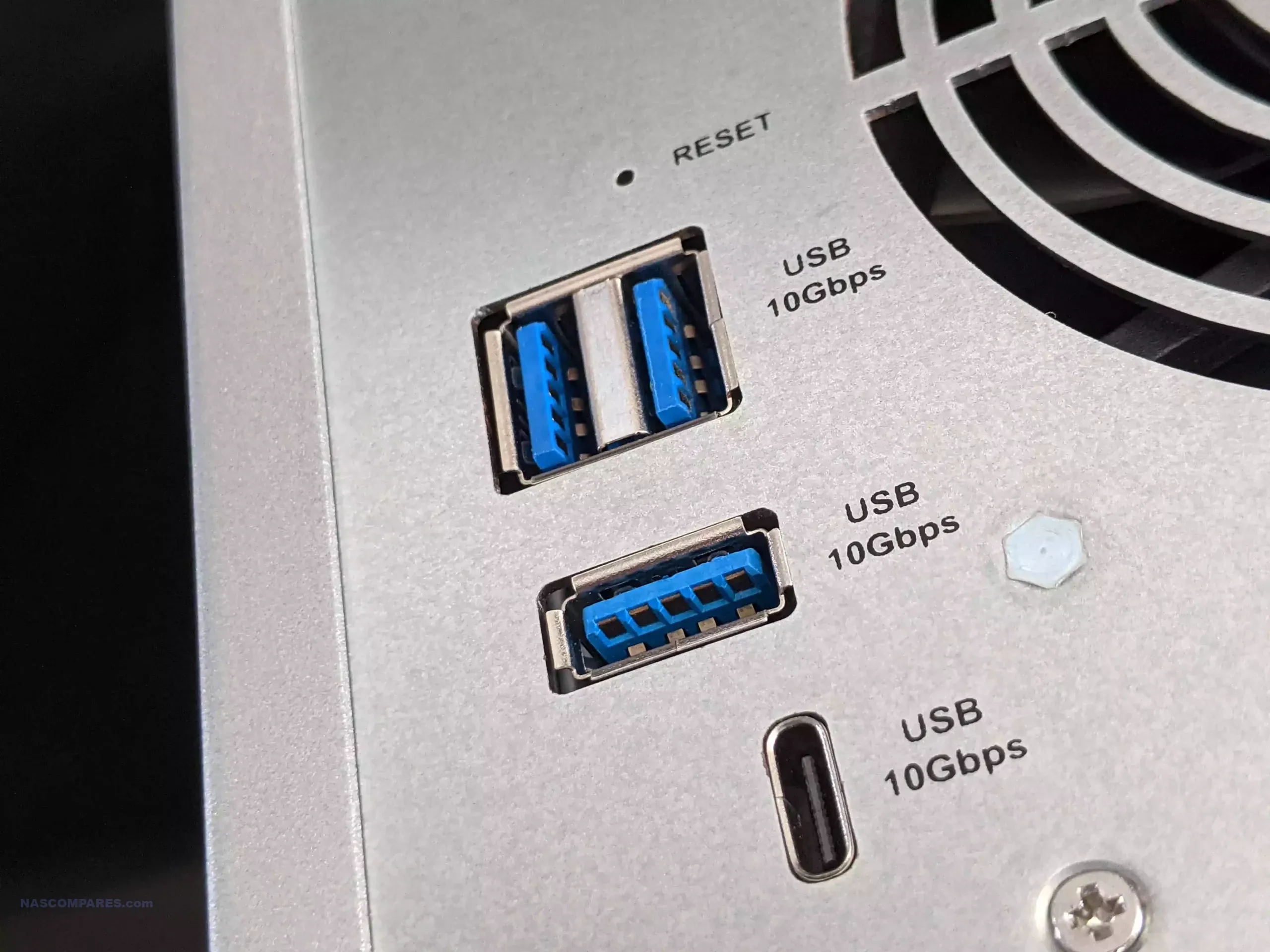
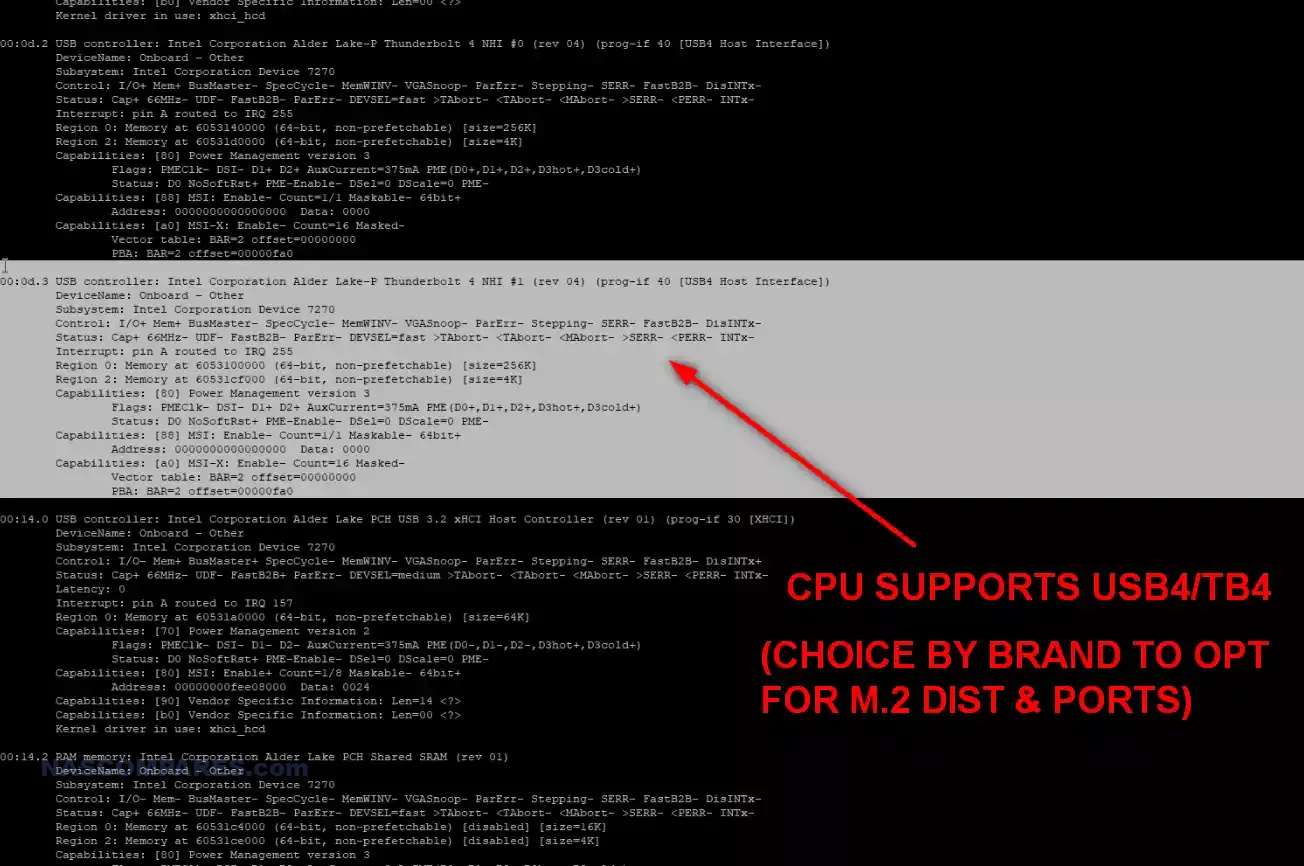
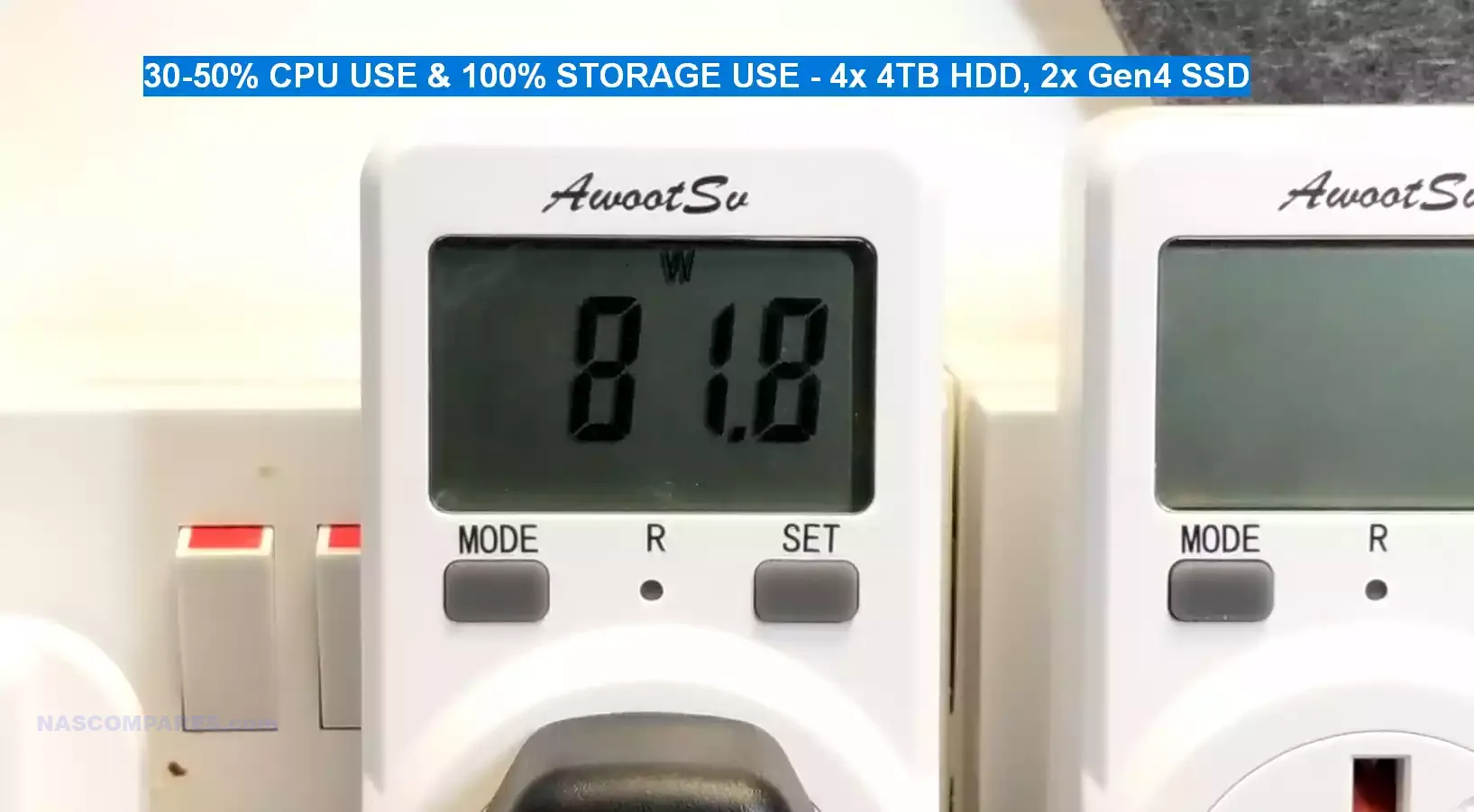
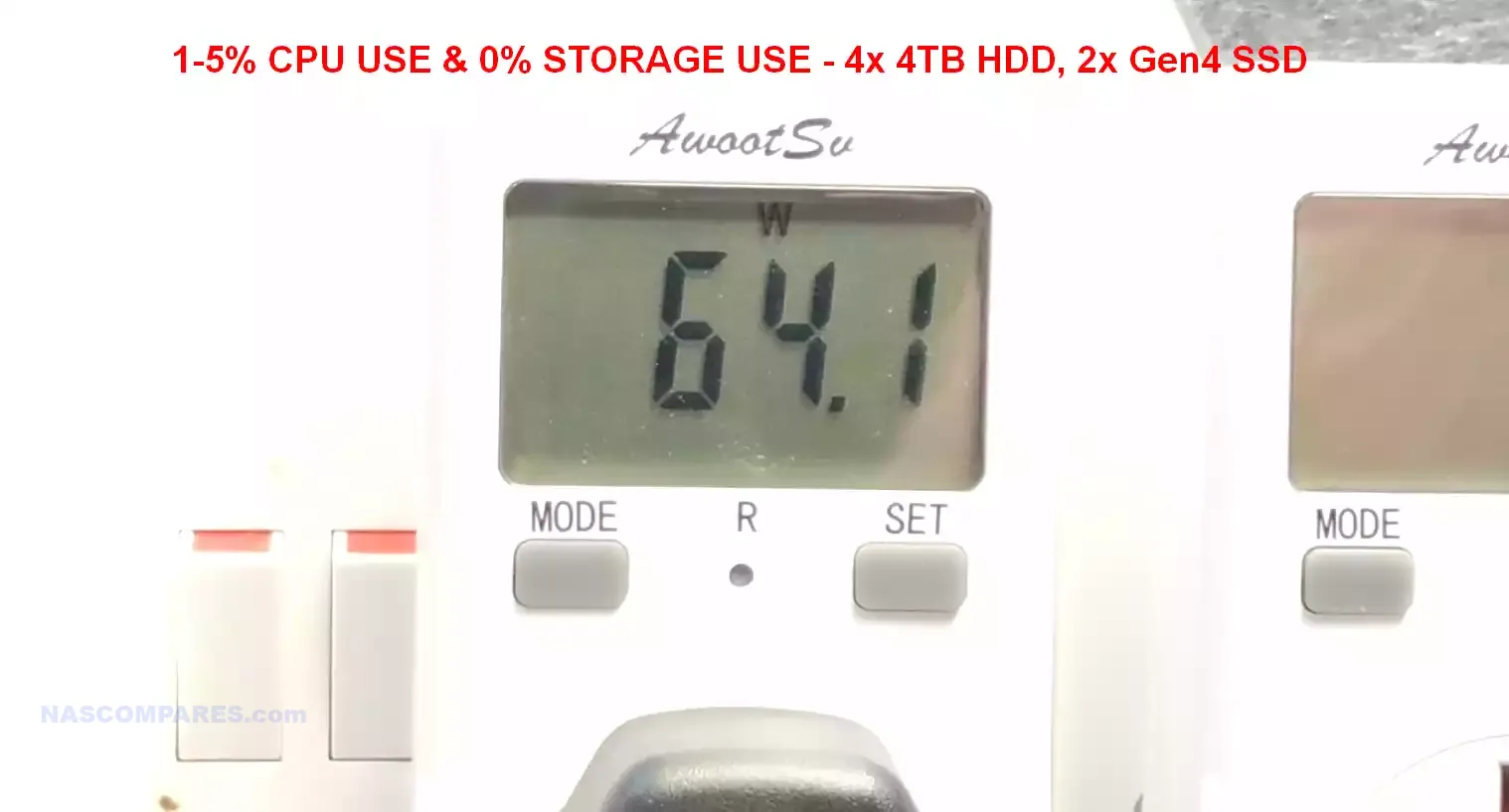
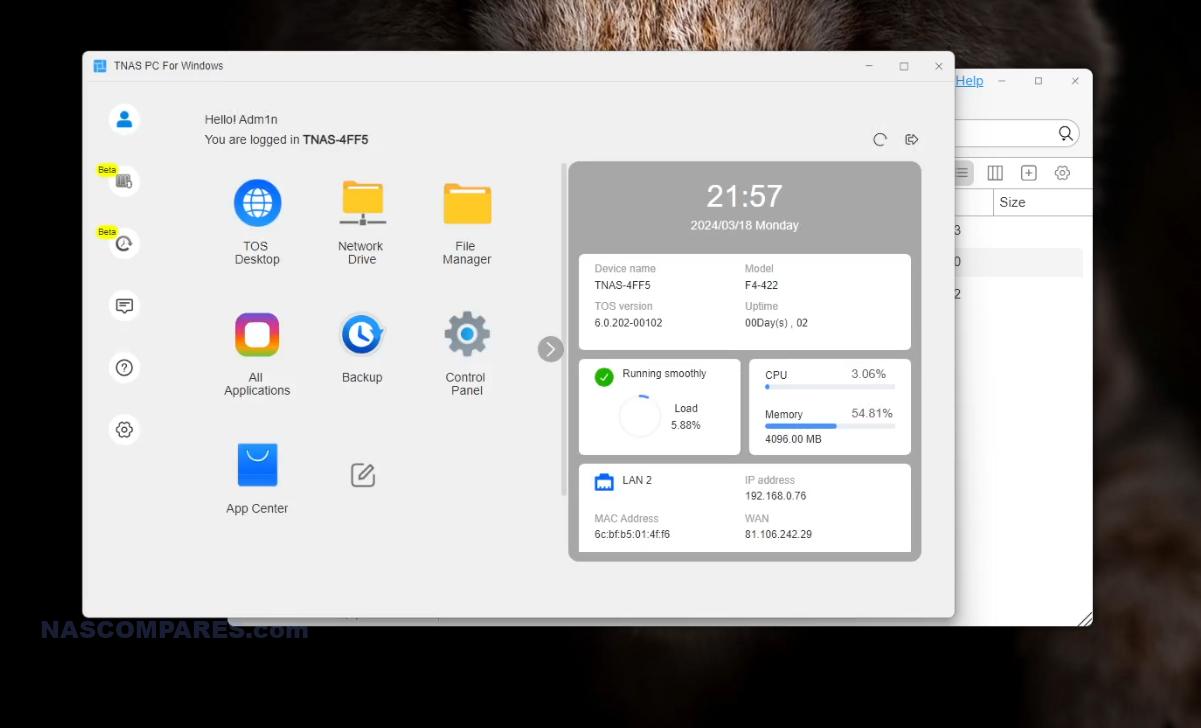
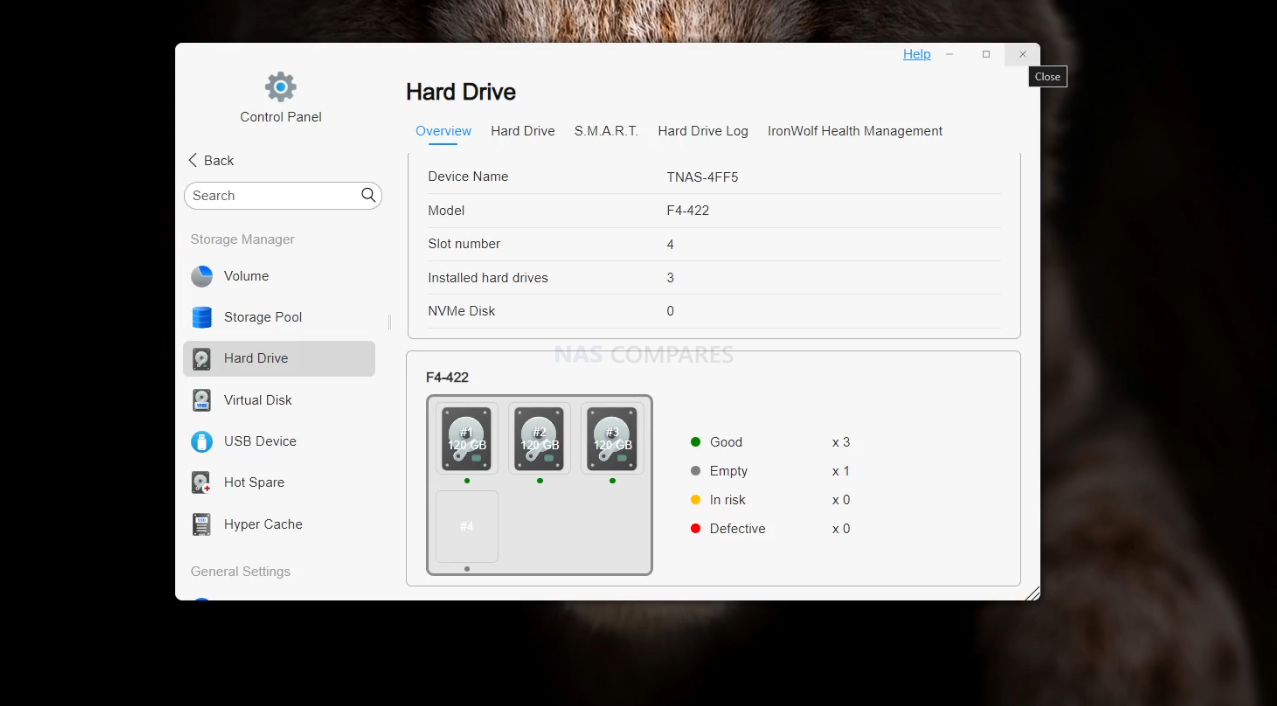
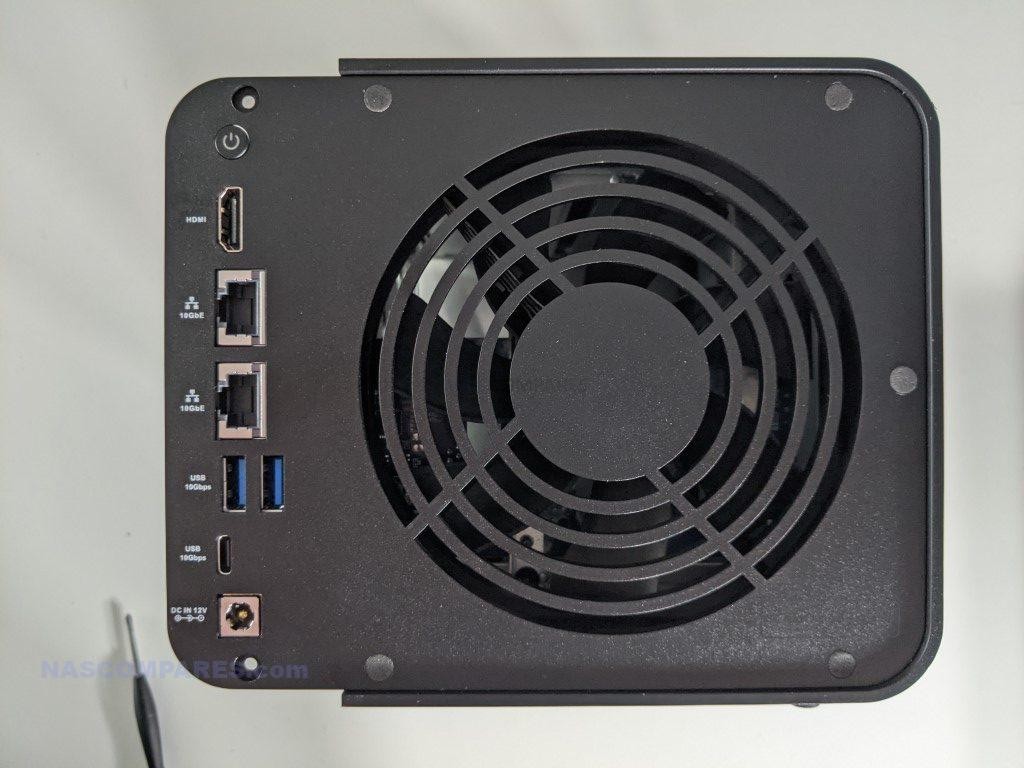





Could you not scroll and click everywhere hyperfast?
REPLY ON YOUTUBE
It’s strange to complain about 12th gen intel being old as I haven’t found a single HDD NAS that has a newer intel CPU.
It would be nice to have newer stuff, but it doesn’t seem to have reached the NAS space for some reason
REPLY ON YOUTUBE
Could you suggest a gas system for me? All I need to store is movies, st shows and photos. I have a 14TB External drive and I do use Plex for my media. Any suggestions. I had the Synology 5 bay in mind but I keep seeing Ugreen and now this Terramaster F4-24Max. I am a beginner and do not know much about NAS. I’m looking to get 4 10TB in a Nas.
REPLY ON YOUTUBE
Ignore my watch..too late, I was wondering what was going on with my Casio 🙂
REPLY ON YOUTUBE
I’d love to be able to buy the mobo for this and transplant it into my T9-423.
REPLY ON YOUTUBE
Robby, could you look into the back-up features on these? I’ve seen some promo material that show they are developing a back-up solution, that looks like a direct competitor to ABB.. if thats included, then I think its fair to start considering these as alternatives.
REPLY ON YOUTUBE
I was considering getting one of these but I have trust issues when it comes to companies like Terramaster could you perhaps do a deep dive on their operating system for this Nas
REPLY ON YOUTUBE
I’ve had the F4-424 Max now for 3 weeks and had nothing but problems. I should have known when TOS uses /Volume1 instead of /volume1. Not to mention no access to root. Returning it tomorrow for a Synology DS923+.
REPLY ON YOUTUBE
Can someone verify if the F4-424 Max will work with 3rd party RAM for increasing memory? I am currently setting up my new F4-424 and want to increase the ram to 32 gig. I have read other models were locked to only use official TM ram. That is EXPENSIVE and what they have in the TM store, none mention being compatible with the Max model. Thank you.
REPLY ON YOUTUBE
Fun video,, liked it.
REPLY ON YOUTUBE
I’m ok with them avoiding the 13th/14th gen Intel CPUs given their failure rate. The price isn’t terrible given all that you’re getting, but it more than what I’m willing to pay. The 424 max is likely my next NAS as my Synology boxes are getting long in the tooth and their software is getting worse each update.
Now do I have to fly over to the UK and take you and Eddie to lunch to get one of those teal sweatshirts in the shop? 🙂
REPLY ON YOUTUBE
No PCIe slots is kind of a non-starter for this price point. Seems to be a significant oversight.
REPLY ON YOUTUBE
I have the 6 bay external drive usb cage and love it. So far, it’s been an absolute rock.
REPLY ON YOUTUBE
given the cpu failure rate of the 13 and 14th gen i am not surprised they picked a 12th gen honestly its not a problem
REPLY ON YOUTUBE
i mean yeah as a turnkey solution, i agree with hat. But if you’re planing to change the OS and running something different more potent on this system. You may consider buying a used 7 to 12-year-old workstation or 2 to 3 u rack server. Like the DELL PowerEdge servers. i know those are powerful scalable servers with plenty of power. i have a r630 with two 12 drive PowerVaults and this thing is a beast.
in my case, i needed that power. I do analytic and statistic stuff. Some folks would today say, i do AI things but yeah you can call it that way if you happy with.
but i rather prefer to call it analytics and statistics also do this for 8 years now and back then ai wasn’t that useless and meaningless word like it is today.
i got mine for about 600€ including both PowerVaults, i spend another 600€ to upgrade the cpu and RAM from a single e5 2603v3 with 112gb to a dual e5 2683v4 and 512gb ram and bought 8 sata SSDs for raid 10 and 1tb storage in total. Everything else lives in the PowerVaults in a raid 6 configuration and both PowerVaults are mirrored to each other, basically this is a raid 60. Eacch PowerVault has about 38TB usable. So 1TB is fast working storage and 38TB is long therm storage. i know raid is no backup, but what the fuck needs to be happened to lose all my data. Everything is redundant in my system.
REPLY ON YOUTUBE
No Usb 4.0 or Thunderbolt for that price no thanks
REPLY ON YOUTUBE
The over 2000 GBP price tag made me cry a little bit.
REPLY ON YOUTUBE
TOS 6 is almost certainly more feature rich and has more polish then UGreen UGOS Pro. So perhaps not great but better than some other options out there.
REPLY ON YOUTUBE
Using their 6 bay 5095 with unraid and a 6bay DAS with another minipc running unraid, and hope they made n100/n305 version of 6bay in future
For this bigger 9bay vesrion it will better if they give one pcie slot for upgrade ?
Been using 2p+8e as work laptop everyday and honestly it doesn’t that quick compare to a pure 8 ecore n305 ????
REPLY ON YOUTUBE
I’d like to very much disagree about the copper ports. I’m on the SFP or nothing fraction. Every 10G component in my homelab is connected by DACs except for my Mac that only has the cheap TB4 10GB Adapter that has a copper port. And that’s getting terribly hot because of the copper port.
REPLY ON YOUTUBE
Nice review. Can you folks look into TOS 6 VPN client not working with any US VPN providers? I’ve gone through about 10 providers, and none say it’s supported, and Terramaster support has said they don’t have a list. I’ve tried to get it to work with no luck. I can find no internet example of anyone getting it working.
REPLY ON YOUTUBE
Since I’m partial to smaller boxes, I’d like to have a T6-423 equivalent with a CPU that doesn’t suck.
REPLY ON YOUTUBE
I have the t12-500 Pro. Very impressed and great at Plex.
REPLY ON YOUTUBE
Sorry I’m very new, is the 10gbe ports irrelevant if my internet is 1gb? ????
REPLY ON YOUTUBE
This… 0:29 1:32 2:46 3:50 4:55 .. and That’s… 6:51 7:34 8:18 9:28 10:30 Every time you bring these Tunes up… The Editor Needs 2x a Pay Rise ????
REPLY ON YOUTUBE
The only people that should be buying NAS are those who work in a team environment and maybe those working with Macs. Freelancers should just use HDD as internal drives in a PC. This is from someone who had a Synology back then and backup and specially restoring times were impossible.
REPLY ON YOUTUBE
Where do I buy a ‘Rocking Out The Gate’ T-Shirt?
REPLY ON YOUTUBE
Nice new studio!
P.S. I already miss seagulls…
REPLY ON YOUTUBE
really good. i like it 🙂 preatty solid way to do the video. great stuff.
REPLY ON YOUTUBE
TOS 5.1 app center was extremely outdated with the apps selection I was surprised. i can maybe look the other way for a few versions behind but for example the docker engine was v20 and the current is now 27. also it look like many of the apps hadn’t received updates in a few years most were around 2022. I picked up the base 424 model last prime day sale and within a couple days toss unraid on as i had a spare license and would suggest to anyone thinking of purchasing terramaster to do the same in installing a third party os.
REPLY ON YOUTUBE
The Karate Kid Theme Musical ????????????
REPLY ON YOUTUBE
Hardware is great but Terramaster has history of being hacked in the past. Great if you are installing 3rd party OS.
REPLY ON YOUTUBE
Wendell from level1techs put 96gb of ram in his video. Also these companies need to add support for sas drives.
REPLY ON YOUTUBE
I’m afraid of Terramaster, I have 3 of them in the F4-220 series and have had one have a hardware failure and another not except a reset. It wasn’t the drives, anyone know if or how to recover the data?
REPLY ON YOUTUBE
Aside. Thought for another video: the branded turnkey nas seem to make a point of supporting adding & growing storage over the life of the appliance. Some recent reading of mine suggests that the diy os (truenas, et al) don’t make this easy or only do it in limited ways. It would be great to have one of your summary videos on this topic. “can you grow your nas”.
REPLY ON YOUTUBE
Audio quality is 1000% better. I have had a challenge with your accent in the past but non-issue now. Crisp setup.
REPLY ON YOUTUBE
loving the new studio, goodbye broom cupboard!!!
REPLY ON YOUTUBE
only 4 Drives? what’s the point? I’ll never understand the point of a tiny NAS, just mount the drives in your PC case.
REPLY ON YOUTUBE
Nice new studio, keep going.
REPLY ON YOUTUBE
Power button back.? Not for me.
REPLY ON YOUTUBE
I really wanted this, but the price difference from the F4-424 Pro was too big, and i’m happy about my choice. The CPU in the Pro is more than enough, and i don’t have 10Gbe anyway, and adding the price of 3 10Gbe switches ….
on the minus side, the MAX ships with TOS 6 , and the Pro doesn’t, i thought it did as Terramaster says “New 2024 product lineup powered by TOS6 ” and the pro came out in January 2024 , but TM says TOS6 should be out in 1-2 weeks
REPLY ON YOUTUBE
Really happy on the mixing drive sized. That “TRAIID” feels like the Drobo’s solution though, and happy someone has similar solution.
REPLY ON YOUTUBE
When will you test the F6-424 Max?
REPLY ON YOUTUBE
I feel a good review would be where truenas, OMV, unraid, debian with casaOS… one of these… are put on terramaster appliance… how it goes, if there are issues, if one can count on that ability to make use of the HW without stock software…
REPLY ON YOUTUBE
It could be worth noting that TOS does not support full disk encryption, only folder encryption. Folders however cannot be decrypted, so if you change your mind, files need to be copied out somewhere else.
REPLY ON YOUTUBE
Hi. Did you find CPU/PCIe 4×4 nVME overheating in a small enclosure design for less-powerful CPU/nVMEs? Do nVMEs with heatsink fit under the hood? PCIe 4×4 nVME in my opinion requires a heatsink. Would you go with the Samsung 990Pro or Samsung 990Evo with this enclosure? Where I live the price difference between the two nVMEs is currently negligible. Thanks.
REPLY ON YOUTUBE
If only Synology would match this hardware (without drive HDD /SSD / RAM lock-in), I’d upgrade tomorrow.
REPLY ON YOUTUBE
Thanks for the review Robbie. Also thanks for Karate Kid flashback. Brought a smile to my face.
REPLY ON YOUTUBE
tos 6 fw still has issues and updates not released for all devices. Devices f6 max series is also out of stock till somewhere in november 2024 and i assume they holding off stock cause of the firmware issues. Went with Ugreen as i was able to get a hold of one 6800 pro while not released yet here where i am. UGos working no problems atm
REPLY ON YOUTUBE
One thing i would also consider i heat. I highly doubt that CPU will be able to perform at it’s full potential. I run a F424 Pro and the N305 on standard settings shoots up to 94°C with only moderate usage. Reason is the passiv cooler and little air flow. After tweaking the Bios settings and lowering turbo from 35W down to 18W it runs at acceptable temps with basically quiet fan settings.
From that perspective i am not sure if it is worth even going for Max. I would say only if you are ready to play around with additional cooling, drilling holes and what not.
REPLY ON YOUTUBE
After looking at this on their site and reading the Terramaster subreddit, i decided DIY is the way.
REPLY ON YOUTUBE
Why isn’t anyone reviewing the F6-424 Max model?
REPLY ON YOUTUBE
i’m looking for a Nas to run plex/file storage/containers/vms wondering if the f4-424 pro will be enough or better to just grab the max?
any other possible reccomendations
REPLY ON YOUTUBE
For plex the max seems overpowered for me. I’d love a 6-bay pro but it doesn’t look like they’re making one anytime soon, and they need to bring an 8-bay consumer model to compete with the upcoming ds1825+
REPLY ON YOUTUBE
Damn nice hardware and so tempting! But I just don’t want to give up my Synology software ???? I’ll stick with the weak CPU and slow NICs on my NAS and use a mini PC for VMs.
REPLY ON YOUTUBE
First! This is a great unit, thanks for the video.
REPLY ON YOUTUBE